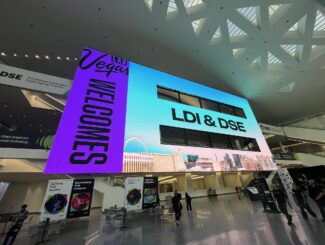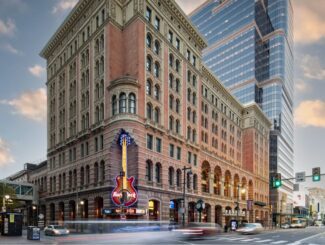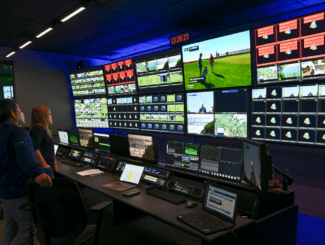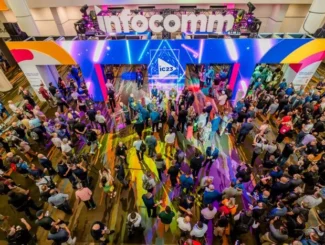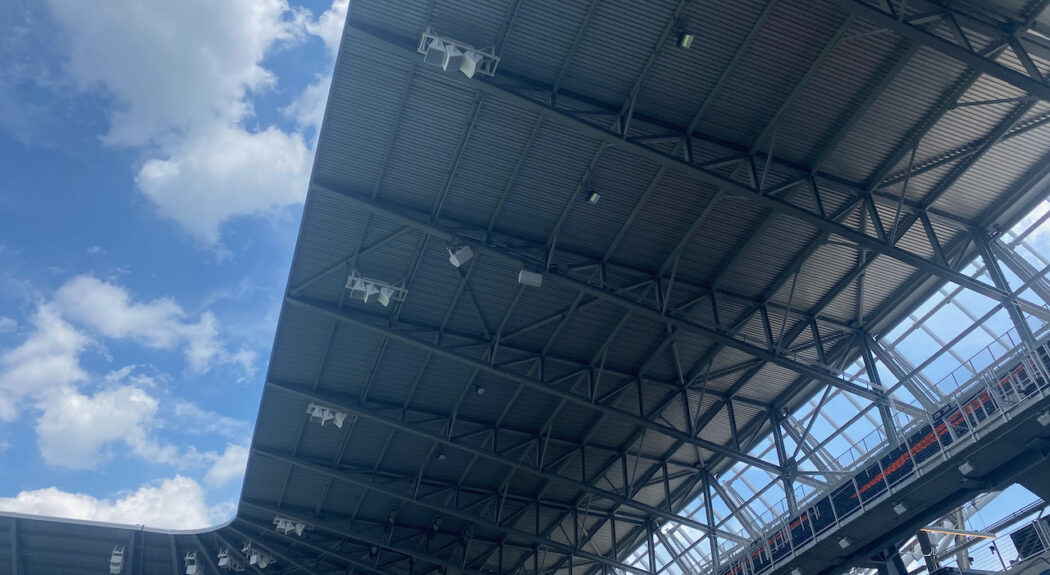
New technologies like focused lens antennas from MatSing and CPRI-based gear from CommScope helped Mobilitie build a cutting-edge distributed antenna system (DAS) at FC Cincinnati’s recently opened TQL Stadium, according to Mobilitie.
In an interview with Vijay Patel, Mobilitie’s senior director for technical solutions, and Parag Dharia, sales director for CommScope’s venues and campus network division, we learned that the DAS put in place at TQL Stadium used the MatSing lens antennas to provide top-down coverage from the venue’s pitched roof, and also used CommScope’s Common Public Radio Interface (CPRI) gear to help simplify installation and to reduce the need for on-site telecom equipment.
“We really wanted to think outside the box, to do a design that was much different from other providers,” said Mobilitie’s Patel. Patel said Mobilitie, which also built the DAS at Minnesota United’s Allainz Field in Minneapolis, now has 10-plus MLS customers and is learning from each deployment.
Beating the sod
One of the problems with the popular soccer-only stadium designs that are emerging in the U.S. market is the question of how you cover the lower-bowl seating with wireless. While Wi-Fi networks have proven to work well with under-seat antenna designs (which is what was used at TQL Stadium), for cellular under-seat deployments are challenging, with complex designs and higher costs for more antennas because of a need to keep antenna power low.
At TQL Stadium, Mobilitie turned to MatSing, which is making a name for itself in sports wireless deployments lately with several major recent contract wins, including new DAS builds at AT&T Stadium and Allegiant Stadium. With their far reach, the MatSings could be deployed in the TQL Stadium roof and point down to the stands — but once that design decision was made, there was another catch: The gear had to be deployed before the playing pitch was planted, so that cranes could be used. Just to add a degree of difficulty, all this construction was taking place last year during the height of the Covid-19 pandemic.
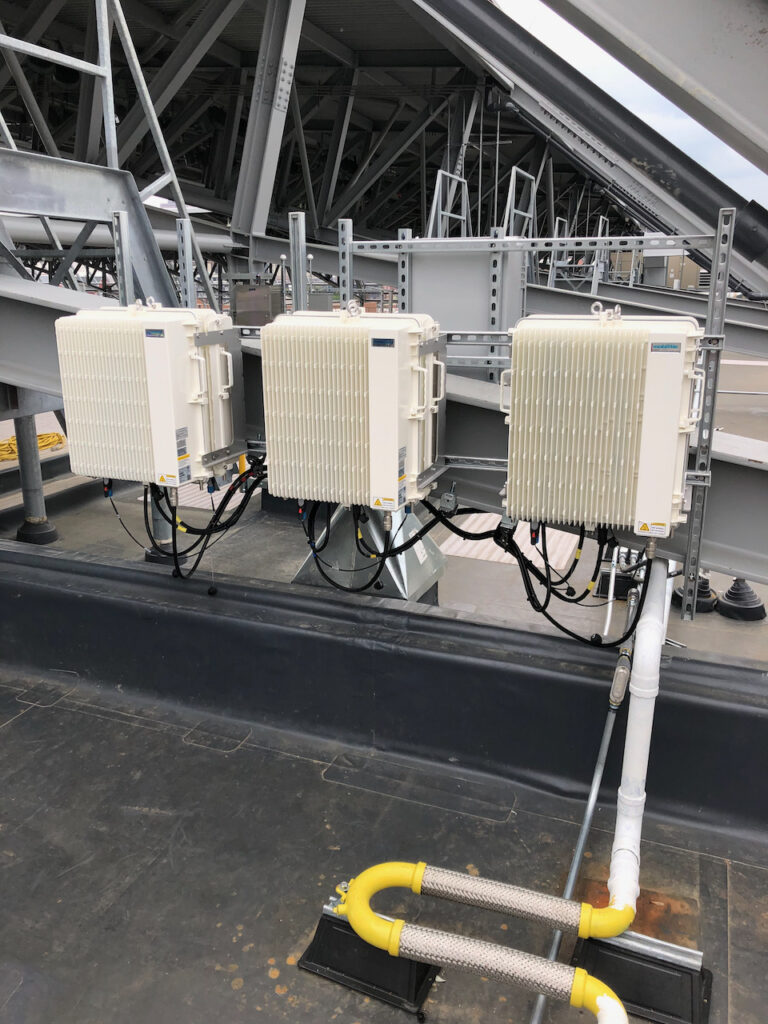
“We had to get all the canopy work done before Oct. 20 (2020), before they put the field down,” Patel said.
With strict guidelines on aesthetic appearances and also concerns about the amount of weight of equipment that could be mounted on the rooftops, Patel said CommScope’s networking gear gave Mobilitie “lots of creative ways to install products.” The CPRI-based equipment, which allows for DAS remotes to connect via fiber to telecom gear that may even be off premises was a “huge” advantage, especially with its savings on space, power and the need for cooling, Patel said.
Mobilitie also made sure it had complete coverage for entry gates to the stadium, especially the main gate where the team expects more than half of any event’s attendees to enter.
“We know that at many events, fans don’t download their tickets until they are at the game,” Patel said. “That’s why we had a lot of exterior mounts [outside the stadium] for that seamless coverage.”



